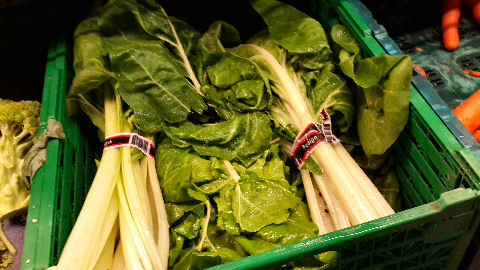
Acelga is the Spanish name for Chard. Chard, in turn, goes by a variety of names, Swiss chard, silverbeet, perpetual spinach, spinach beet, crab beet, bright lights, seakale beet, and mangold – and in South Africa it’s generally just called spinach, despite being a different vegetable entirely. Chard is a member of the beet family, and, along with beets themselves, are cultivated offspring of the sea beet. Most commonly it’s a green leafy vegetable on a thick whitish green stalk – however, there are also various more colorful varieties – some with red veins, similar to beet greens, and some with differently colored stems, generally called “rainbow chard”, and showing up in yellow, red, orange, and purple. It’s highly nutritious, with loads of vitamins, and, it’s quite versatile – the leaves, chopped, are used in dishes throughout the world, and, are big enough to use as wrappers for various preparations when left whole. The stalks can be prepared with, or separately from the leaves, and have their own distinct texture and flavor.
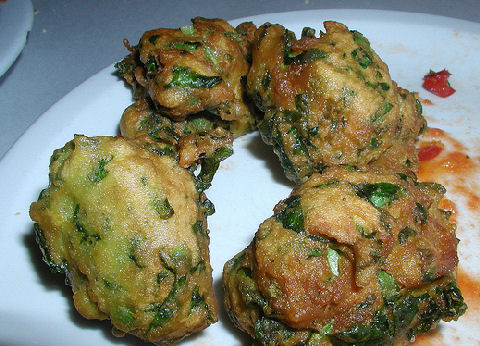
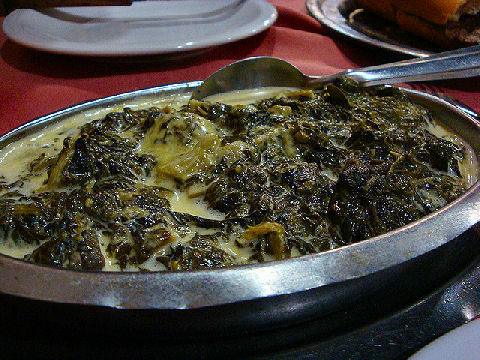
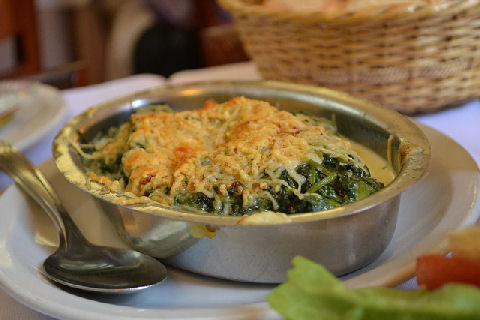
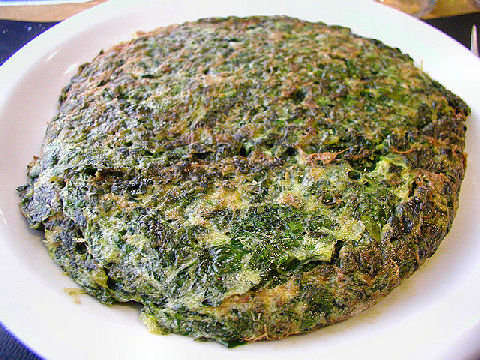
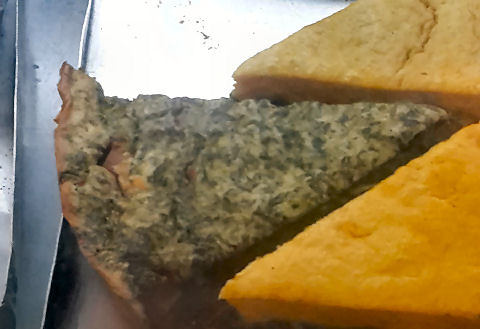
Here in Argentina I’d venture to say that there are four particularly common chard dishes – croquettes, generally called either buñuelos or bombas de acelga, sometimes crocantes; in a creamed version, much like a creamed spinach – generally served in parrillas, steakhouses, and ranging from watery and insipid to some quite good versions; as a sort of chard omelette or tortilla; and, as a vegetable tart in pastry.
At Casa S we’ve used it in so many preparations I’d hesitate to count, but they’ve included various soups, tarts, filled leaves (a la “stuffed cabbage”), sautes, stir-fries, and more. Some of the standout dishes, either in classes or at dinners have been:
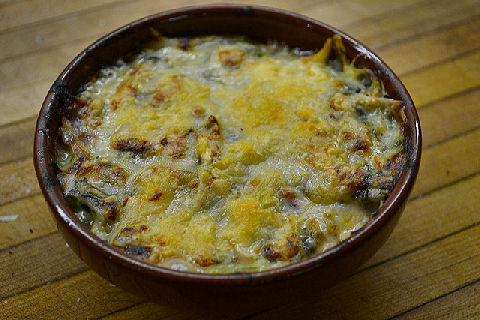
Our own version of “a la crema“, lightened up for “modern tastes”.
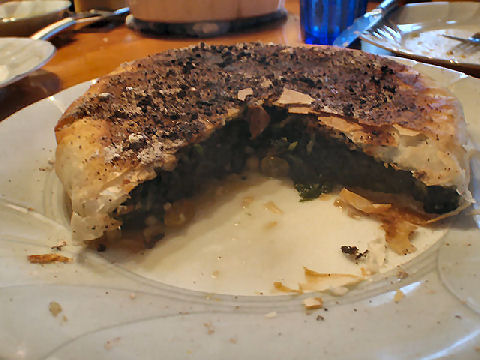
A middle eastern pastilla or b’stilla, for one of our Fall Vegetables classes.
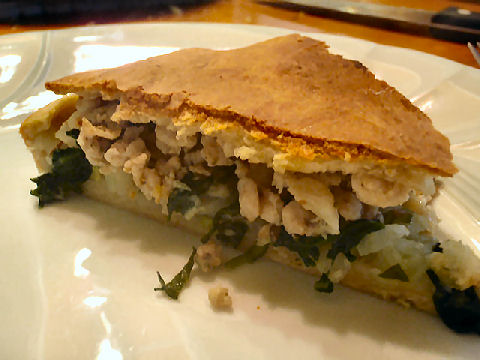
And from a bit northwest of there, in Basilicata, Italy, a torta salata di verdure – swiss chard, spicy, garlicky sausage, fennel, and basil all baked together in a savory crust.
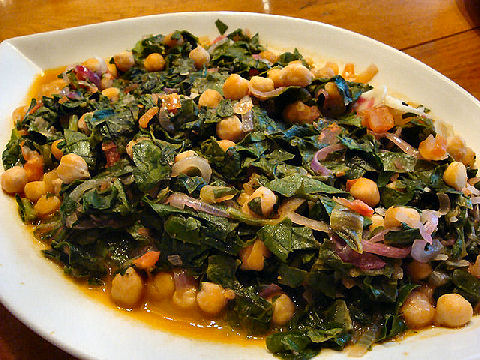
Nivig, and back to the middle east with a dish of chard and chickpeas that fit right into one of our vegan classes.
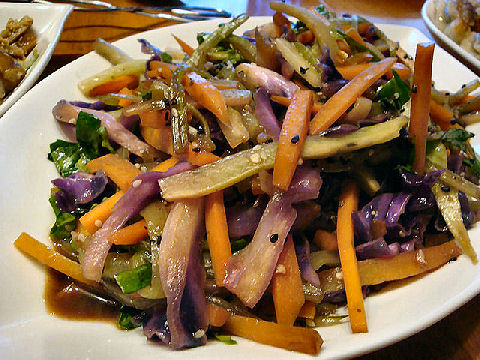
As part of a kinpira, a Japanese side dish that’s great for using up things like chard stems, broccoli stalks, carrots, and cabbage.
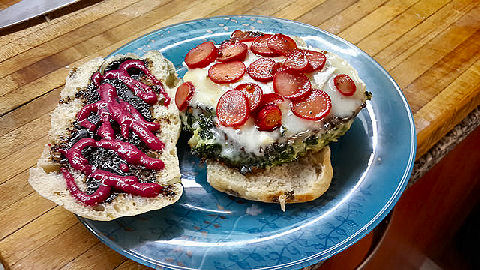
It also makes a great veggieburger, packed with garlic and served up with cheese, pickled radishes, a beet ketchup, and black olive tapenade.
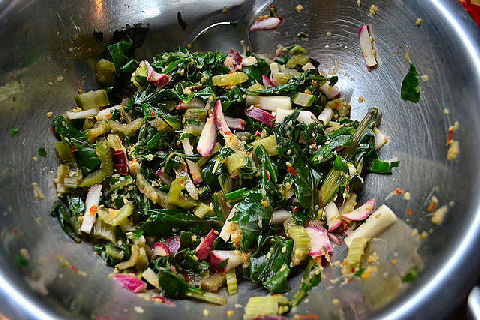
And more recently, you’ve seen me use it in several dinners as a “quick” kimchi.
Which brings us to now, and a new series of vegetable cookery classes that I’ve started teaching. Each week, I pick a vegetable starting with the succeeding letter of the alphabet, so here we start at “A”. I imagine there may end up being one or two letters that I can’t come up with something for – we shall see. For class we made the calamari and kimchi dish linked above, plus:
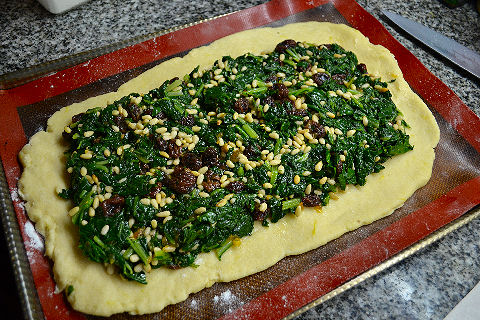
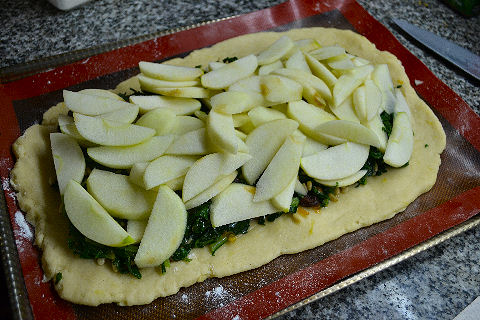
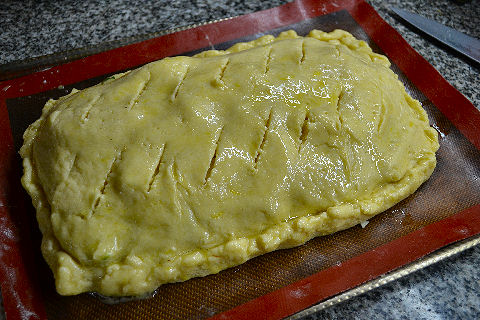
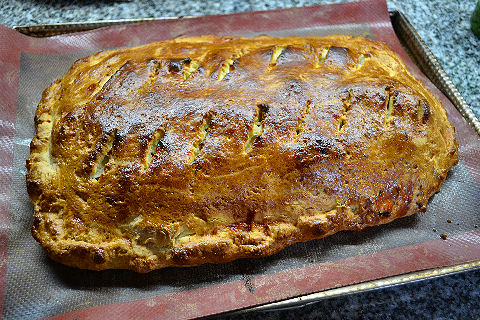
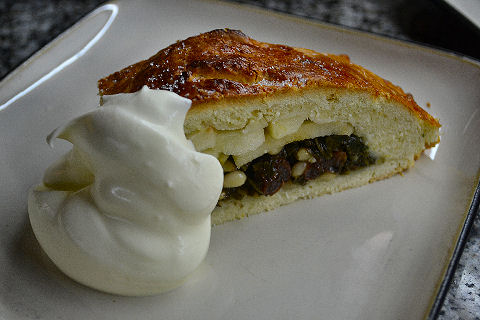
Life is short, eat dessert first. I figured that somewhere out there, a chard based dessert must already exist, and sure enough, those wacky French came through. From the area around Nice comes the traditional Tourta de Blé – a sweet, lemon zest tinged pie crust, rolled out into a rectangle and topped with chard leaves that have been blanched and shocked, chopped, and mixed with apricot jam, rum, pinenuts, plumped raisins (traditionally it would be dried currants, but we don’t have them here), and orange blossom water. That’s topped with peeled, cored and sliced apples tossed with a little sugar and spices if you wish, though classically, not. The pie is topped with more dough, sealed, egg washed, and baked for roughly half an hour until golden brown – just enough time to barely cook the apples and mingle all the juices inside. Delicious, and slightly odd, all at the same time. It was a hit at dinners this week too, for most of the guests – there were a couple who just couldn’t get past the “it’s sort of like spinach for dessert” point.
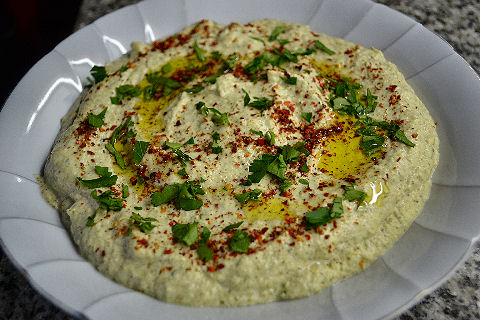
All those leaves left us with plenty of stems. First up, a hummus, a classic Lebanese preparation – I think it’s actually called Silq bi’l-Tahina, which I think roughly translates as “Cooked Chard with Tahini”, but basically, the stems are steamed (or boiled), and then pureed with tahini, lemon, cumin, coriander, garlic, and olive oil, and then drizzled with more olive oil, a little sprinkle of smoked chili, and some chopped parsley and mint. Delicious and far lighter than a chickpea hummus (some recipes that I saw use a mix of both, but I wanted the chard flavor to really come through).
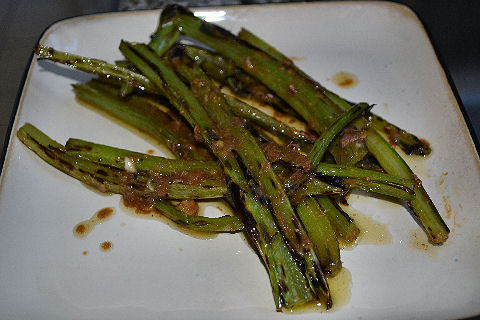
When I say we had plenty of stems, we had plenty of stems! We “grilled” them up – using a stovetop bifera, or cast iron ridged skillet usually used for cooking a steak when you don’t want to fire up the grill – so these are missing that smokiness from the wood charcoal. Tossed with an anchovy vinaigrette – anchovies and chard are a great combo and used in a variety of dishes in Mediterranean cooking – this was a simple whisking together of anchovies, smoked mustard, Chinese black vinegar, olive oil, salt and pepper. Makes for a nice side dish. And next time we’re actually grilling something on the patio, I may just toss some stalks on the fire!
I’ll have to try the kinpira and kimchee. Here in central Mexico, the usual rendition is served with tomatoes and small potatoes (which are cheaper than full-size ones), which gets rather boring.
There’s a great writeup on how to make kinpira here.
Acelga en picadillo de pollo.
Con pure de jitomate, rabos de cebollines troceaditos, ajo en polvo oh ajo picado, pimienta en polvo,
papas amarilla picada, en cuadritos,
sanahorias picadas en cuadritos, un bonche de acelgas picadas en pedacitos.